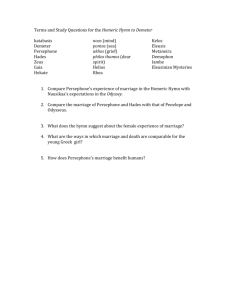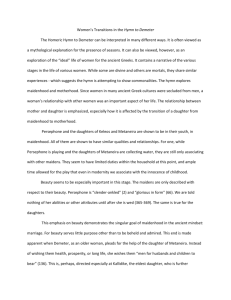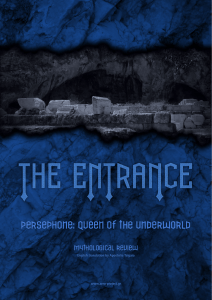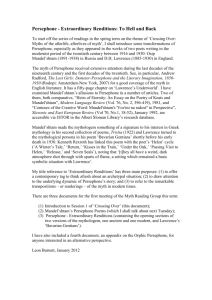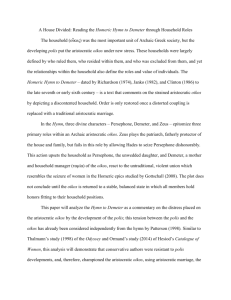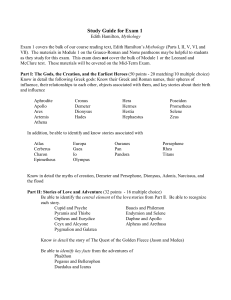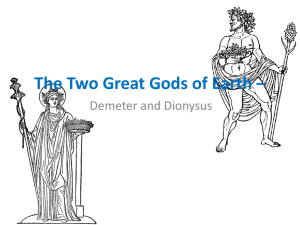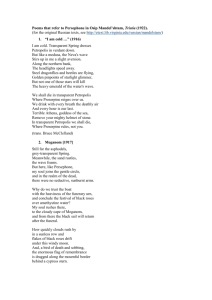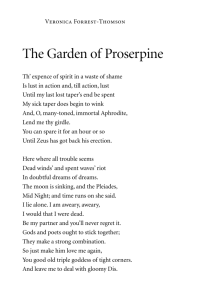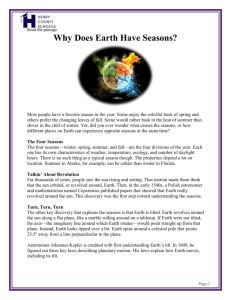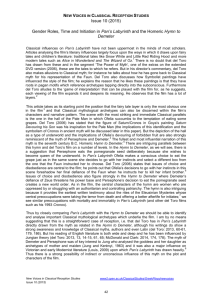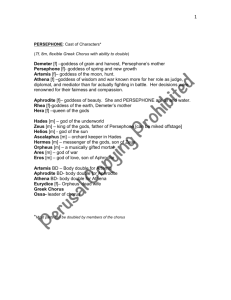Listing Names: Persephone‟s Companions in the Homeric Hymn to
advertisement
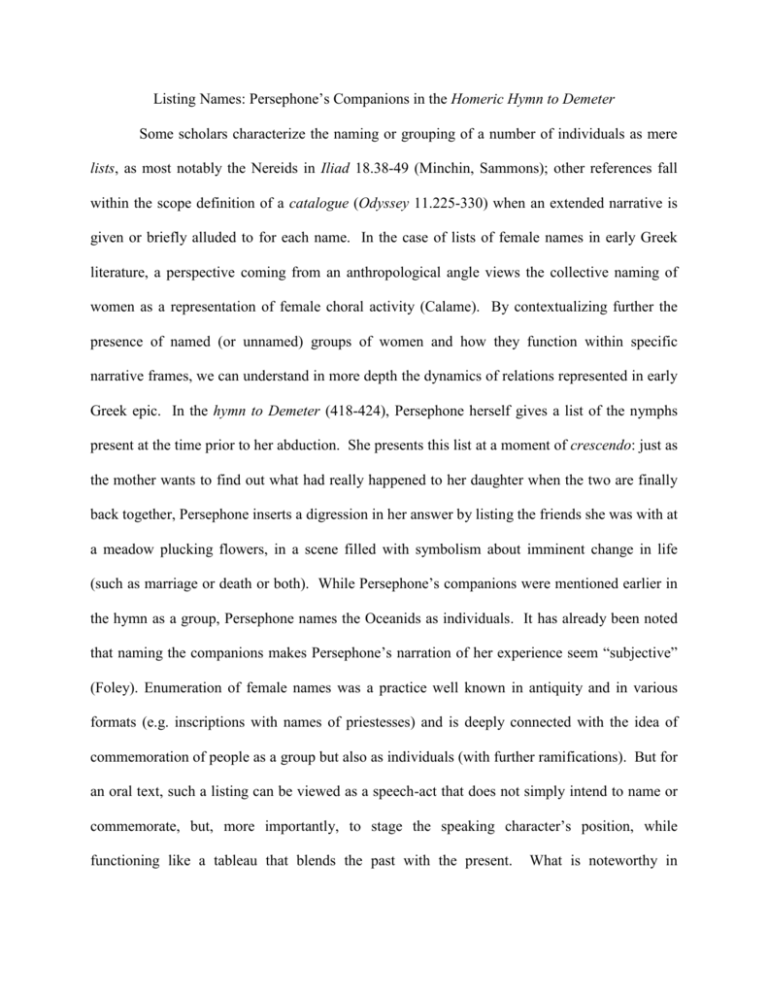
Listing Names: Persephone‟s Companions in the Homeric Hymn to Demeter Some scholars characterize the naming or grouping of a number of individuals as mere lists, as most notably the Nereids in Iliad 18.38-49 (Minchin, Sammons); other references fall within the scope definition of a catalogue (Odyssey 11.225-330) when an extended narrative is given or briefly alluded to for each name. In the case of lists of female names in early Greek literature, a perspective coming from an anthropological angle views the collective naming of women as a representation of female choral activity (Calame). By contextualizing further the presence of named (or unnamed) groups of women and how they function within specific narrative frames, we can understand in more depth the dynamics of relations represented in early Greek epic. In the hymn to Demeter (418-424), Persephone herself gives a list of the nymphs present at the time prior to her abduction. She presents this list at a moment of crescendo: just as the mother wants to find out what had really happened to her daughter when the two are finally back together, Persephone inserts a digression in her answer by listing the friends she was with at a meadow plucking flowers, in a scene filled with symbolism about imminent change in life (such as marriage or death or both). While Persephone‟s companions were mentioned earlier in the hymn as a group, Persephone names the Oceanids as individuals. It has already been noted that naming the companions makes Persephone‟s narration of her experience seem “subjective” (Foley). Enumeration of female names was a practice well known in antiquity and in various formats (e.g. inscriptions with names of priestesses) and is deeply connected with the idea of commemoration of people as a group but also as individuals (with further ramifications). But for an oral text, such a listing can be viewed as a speech-act that does not simply intend to name or commemorate, but, more importantly, to stage the speaking character‟s position, while functioning like a tableau that blends the past with the present. What is noteworthy in Persephone‟s list is the reference to the last but not least two members: the two virgin goddesses, Athena and Artemis. Persephone anchors her narrative around her existence as a maiden, reinstates herself with her earlier group while negotiating her parting from her mother. From a trauma theory perspective, listing individuals that could be part of someone‟s past at a critical moment becomes part of the process of remembering while taking the time to accept a new reality. Recalling a moment of collective activity becomes a rhetorical digression that seeks to project on the other a position that will deflect the interlocutor‟s reaction, and will guide it. In other words, Persephone comes to terms with her own (new) life and guides her mother‟s reaction to her experience, channeling the past into her future. From the point of poetics, epic opens a window into an all female lyric world (similar to the scene that presents Nausicaa with her companions in Odyssey 6). The scene in the Homeric Hymn to Demeter has been compared to the naming of the Nereids in Iliad‟s lamentation scene (18.38-49) where the sea nymphs express solidarity and support to Thetis, as well as similar listings of the Nereids in the Hesiodic Theogony (243-262). In my paper I want to re-route the discussion of this puzzling detail in the Hymn to Demeter by comparing Persephone with Nausicaa aiming to throw more light in understanding how such references to female groups functioned. While Persephone as a speaker lists her companions, Nausicaa‟s companions remain unnamed and „subordinated‟ (explicitly marked as servants). Both scenes present a strong female speaker, but there is a crucial difference: Persephone has crossed a threshold that Nausicaa has not. The epic text in the Hymn to Demeter crystallizes lyric moments and codifies the negotiations of relation between natal and married family. In the last part of the paper, I discuss how Persephone‟s listing problematizes the self through the multiplicity effect by naming all her companions before her union with Hades and creates both a bonding moment for her mother (by re-instating the image of collective virginity, chaperoned by the virgin goddesses) while also creating layers of distancing from her past, present and future, with and without the husband, with and without the mother. Bibliography Calame, Claude. 1997. Choruses of Young Women in Ancient Greece: their Morphology, Religious Role, and Social Function. Lanham. Foley, Helene. 1993. The Homeric Hymn to Demeter: Translation, Commentary, Interpretative Essays. Princeton. Minchin, Elizabeth. 2011. 'Catalogues', in Margalit Finkelberg (ed). The Homer Encyclopaedia, Wiley-Blackwell, Sussex: 155-156. ___. 2007. Homeric Voices: Discourse, Memory, Gender. Oxford. Ormand, Kirk. 2014. The Hesiodic Catalogue of Women and Archaic Greece. Cambridge. Sammons, Benjamin. 2010. The Art and Rhetoric of the Homeric Catalogue. Oxford.
